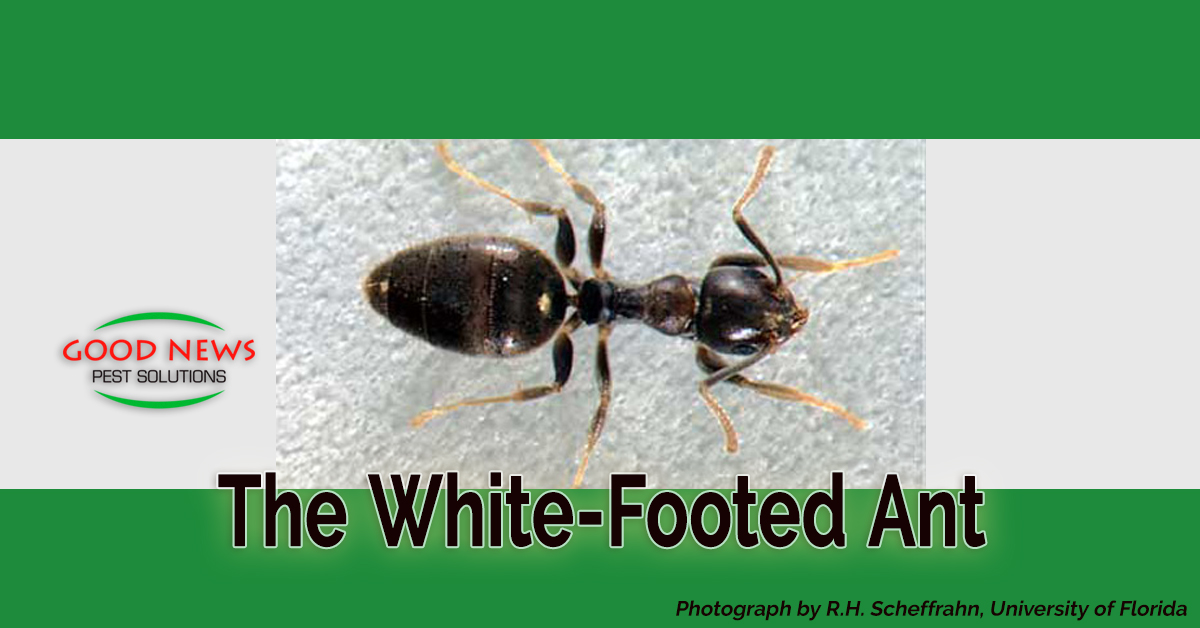
White-Footed Ants
Florida is a strange sort of melting pot, especially on the Gulf Coast. Thanks to our terrific, consistent sub-tropical weather, we draw quite an assortment of residents. After the Civil War and then again following World War II, our area was hit with an influx of former soldiers and their families. Add to that the folks from Cuba and Puerto Rico, tourists, snowbirds, retirees, and more, the state is a reflection of America in general with no shortage of variety around every corner.
And just like people, our insect population – already filled with many of our own special and unique bugs – adds to its ranks almost daily. It seems like every week we read a report of another invasive species that has decided to make the Sunshine State their new home.
This week, we want to look at Technomyrmex difficilis – also known as the White-footed ant. While this insect was first confirmed to be in our area in 2004, it was already established. Because of misidentification, it’s hard to say just when the ant popped up in Southern Florida, but entomologists believe it was accidentally introduced from one of the West Indian islands, first originating in Africa and Asia.
Colonial Life
Pretty obviously from the common name, white-footed ants have white ends of their legs, like little tube socks on their feet. Sometimes the feet may appear yellowish white. Otherwise, they’re primarily black or dark brown with five abdominal segments, a pinched waist, six legs, and twelve segmented antennae.
There are a couple of other species of ants that are sometimes confused with white-footed ants. Crazy ants tend to be smaller than white-footed ants, hairier, and give off a fruity smell. Crazy ants also tend to be faster-moving. Another fast mover, if you see all-white ants, would be another annoying bug – ghost ants.
White-footed ants have a relatively short life span and don’t have much in the way of a defense mechanism – except in one essential way. One of the most remarkable things about white-footed ants is also the most annoying – their ability to reproduce. Almost half of every colony are females. They are fertilized by wingless males and just keep laying eggs.
Plus, a rare few of each generation are winged males and queens – they leave their current colony during July and August in Florida – mate in midair, and then found new colonies. Very quickly, the other females replace the queen and continue the colony.
But that’s not all - in a somewhat unique manner, the brood who have taken over for the queen can also grab a few wingless males and “bud” a new colony without needing another queen.
White-footed ants tend to nest inside wall voids in homes and offices. They follow electrical cables and pop out into kitchens and bathrooms to find liquid and solid foods.
Dinner Time
White-footed ants don’t bite or spread disease like some other troublesome insects. Their biggest nuisance is their persistence and high reproductive rate. They feed on plant nectars and honeydew - not the melon, but the excrement from certain insects like whiteflies.
Technomyrmex difficilis is also known to defend whiteflies, aphids, mealybugs, scales and other honeydew producers – sometimes with devastating effects on agricultural production in some areas. They will also ingest proteins, including dead insects if necessary, to survive.
Unfortunately, there are few effective preventative or post-infestation approaches to dealing with white-footed ants, and most are inaccessible to the average consumer.
The only way to truly treat a white-footed ant problem is through a professional. Luckily, our most popular solution is effective against most ants, as well as roaches, silverfish and flies and is safe for your whole family. Go Green Perimeter Plus covers your whole home for an affordable price and we guarantee our service. For more information or to schedule your first visit with one of our highly-trained Good News Pest Solutions’ technicians, just give us a call!
« Back to Blog
Proudly Serving
Sun City Center, Ruskin, Palmetto, Parrish, Ellenton, Bradenton, Anna Maria, Holmes Beach, Bradenton Beach, Longboat Key, Lakewood Ranch, University Park, Myakka City, Sarasota, Siesta Key, Osprey, Nokomis, Casey Key, Venice, Englewood, North Port, Port Charlotte, Punta Gorda, Arcadia
Things You Can Do
Pay Your Bill Online
Leave Us a Review
Request a Free* Termite Inspection
Stop Mosquito Bites
Get Rid of Rodents
Get a Termite Damage Warranty
Get Pest Control for Your Attic
Get Pest Control for Your Business Request Prayer
Corporate Address
1080 Enterprise Court, Ste A
North Venice, FL 34275
Call Now: (941) 412-9610
Text: (941) 412-9610
Fax: (941) 412-0080
